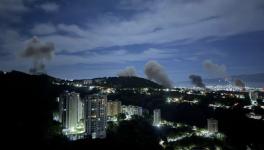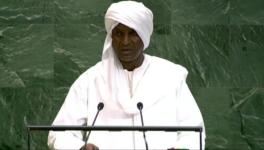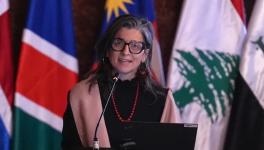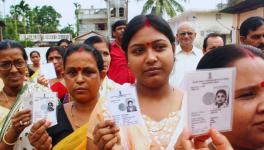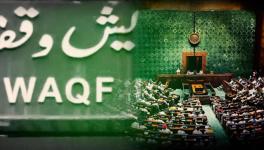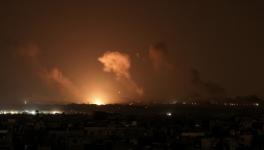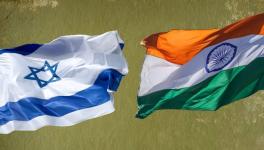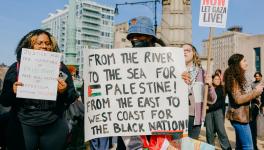The Rwandan Genocide Case and its Eerie Parallels in Today’s India
It is imperative to demand a legislation against genocide, which India is yet to enact even after more than 60 years of ratification of the Genocide Convention. Although the creation of a law is not a panacea for all the ills on Earth, it does help in fixing clear lacunae in the legal system, writes SYED MOHD WAQUAR.
INDIA has witnessed several carnages, be it the Nelli Massacre, the 1984 anti-Sikh riots, the Hashimpura Massacre, the Gujarat 2002 anti-Muslim riots, and most recently, the 2020 Delhi riots. Though some scholars claim these to be genocides, the State vehemently denies it. In this context, it is crucial to refer to the Convention on the Prevention and Punishment of the Crime of Genocide that was passed with an aim to “prevent genocide.”
Genocide Convention
In 1946, the United Nations General Assembly [UNGA] passed a resolution recognizing genocide as a crime under International law. And then, the Genocide Convention was unanimously adopted by UNGA in December 1948. India, although a signatory to the 1948 Genocide Convention, which it ratified in 1959, has not yet enacted the law pursuant to it. India follows the dualistic system, where it is necessary to pass a law in parliament (pursuant to the ratified convention) under Article 253 of the Constitution to make it enforceable in the country.
Article II of the convention defines Genocide as “acts committed with intent to destroy, in whole or in part, a national, ethnical, racial or religious group, as such: (a) Killing members of the group; (b) Causing serious bodily or mental harm to members of the group; (c) Deliberately inflicting on the group conditions of life calculated to bring about its physical destruction in whole or in part; (d) Imposing measures intended to prevent births within the group; (e) Forcibly transferring children of the group to another group.”
The Indian Penal Code [IPC] does not have any equivalent of “acts committed with intent to destroy, in whole or in part, a national, ethnical, racial or religious group.” A crime like genocide and such associated crimes can’t be dealt with the same procedural and substantial laws that are created for regular crimes. This points to the need for legislation against genocide in India.
Article IV of the Genocide Convention makes even ‘constitutionally responsible rulers’ and ‘public officials’ responsible for the crimes committed. Incorporation of this Article in Indian legislation could significantly help in reducing current substantial and procedural hurdles as it is extremely hard to try public officials for genocidal crimes committed with their involvement or complicity.
The tribunal deduced that the wrong thing about this coverage was the continuous identification of Tutsis as an enemy. The readers and listeners were not directed towards the armed forces; rather, the whole Tutsi community was portrayed as a threat. Therefore, the tribunal clarified that ‘direct’ incitement does not mean that a call to genocide must be explicit. It can be implicit, and must be understood in the cultural and linguistic context, as well as most importantly, how it is perceived, as in for whom it is said.
The Supreme Court took a similar stance while framing guidelines in the context of lynching in its Tehseen Poonawalla judgment in 2018. As per the guidelines, the cases in which police officials fail to comply with the directions mentioned, their act shall be considered as deliberate negligence and/or misconduct, and accordingly, actions would be taken against those police officials, not limited to departmental action under service rules.
Apart from Genocide, Article III of the Convention also makes conspiracy to commit genocide, direct and public incitement to commit genocide, attempt to commit genocide, and complicity in genocide as punishable acts.
Also read: Rohingyas: Genocide in the backyard
Let us focus on what constitutes “direct and public incitement to commit genocide.”
The Rwandan ‘Media case’
The International Criminal Tribunal established for the trial of the Rwanda genocide, in the infamous “Media Case” of 2003, has laid out an interpretation of the term ‘direct and public incitement to commit Genocide’. The Editor-in-Chief of the Kangura magazine, and founders of the RTLM radio broadcast channel were being tried for their alleged role in the incitement of the Rwandan genocide. The tribunal noted that RTLM broadcasts and virulent writings in Kangura portrayed Tutsis as an ‘enemy’ through their continuous propaganda and ethnic stereotyping, and calling for the extermination of enemies. In defense, the accused argued that the downing of the President’s plane had instigated the killings of Tutsis. The tribunal held that while this event was a trigger point, the past broadcasts by these media groups acted as a “loaded gun.”
On the issue of what constitutes ‘direct’ call, the Tribunal in Paragraph 1011 of its judgment notes that:
“[T]he direct element of incitement should be viewed in the light of its cultural and linguistic content. Indeed, a particular speech may be perceived as ‘direct’ in one country, and not so in another, depending on the audience. The Chamber further recalls that incitement may be direct, and nonetheless implicit …
The Chamber will therefore consider on a case-by-case basis whether, in light of the culture of Rwanda and the specific circumstances of the instant case, acts of incitement can be viewed as direct or not, by focusing mainly on the issue of whether the persons for whom the message was intended immediately grasped the implication thereof.”
Here, the tribunal referred to the argument of the defence that by ‘enemy’, the defence meant the armed group which was attacking the Hutu civilians and wanted to acquire power in Rwanda; hence they were doing the job of the media, which is to save democracy. The tribunal deduced that the wrong thing about this coverage was the continuous identification of Tutsis as an enemy. The readers and listeners were not directed towards the armed forces; rather, the whole Tutsi community was portrayed as a threat.
Therefore, the tribunal clarified that ‘direct’ incitement does not mean that a call to genocide must be explicit. It can be implicit, and must be understood in the cultural and linguistic context, as well as most importantly, how it is perceived, as in for whom it is said.
Also read: Decolonizing the International Law on genocide:
Furthermore, addressing the question, whether the incitement which has not led to genocide would also be punished, the tribunal referred to its Akayesu judgement.
[Para 1013] … The Tribunal highlighted the fact that “such acts are in themselves particularly dangerous because of the high risk they carry for society, even if they fail to produce results” and held that “genocide clearly falls within the category of crimes so serious that direct and public incitement to commit such a crime must be punished as such, even where such incitement failed to produce the result expected by the perpetrator”.
…
[Para 1029] With regard to causation, the Chamber recalls that incitement is a crime regardless of whether it has the effect it intends to have.”
While interpreting crimes against humanity of persecution (through hate speeches), the tribunal referred to various cases, like that of Julius Stretcher during the Nuremberg trials, when his anti-Semitic writings that had no call for violence and significantly predated the genocide of Jews, were still considered poison that infected the masses of Germany. It termed hate speech as a discriminatory form of aggression where the harm caused to the dignity of the victimized group is irreversible. The tribunal said that the virulent writings of the accused media agencies created an environment of hate in the mind of Hutus against Tutsis. The tribunal defined the crime of persecution as:
“[Para 1072] Unlike the other acts of crimes against humanity enumerated in the Statute of the Tribunal, the crime of persecution specifically requires a finding of discriminatory intent on racial, religious or political grounds.
[Para 1073] Unlike the crime of incitement, which is defined in terms of intent, the crime of persecution is defined also in terms of impact. It is not a provocation to cause harm. It is itself the harm. Accordingly, there need not be a call to action in communications that constitute persecution. For the same reason, there need be no link between persecution and acts of violence ….
[Para 1078] The Chamber notes that persecution is broader than direct and public incitement, including advocacy of ethnic hatred in other forms …”
Eerie parallels in India
In the past few years, India has witnessed an increase in the deliverance of hate speeches and propaganda by most mainstream news media channels, instilling an anti-Muslim prejudice in the minds of the masses. During the anti-Citizenship (Amendment) Act [CAA] protests, what India witnessed was an intense effort by the mainstream media to portray the protesters (a significant number of whom were Muslims) as the enemy of the nation through continuous dehumanization and otherization of the protesters, and by linking them with banned organizations and ‘enemy’ nations. Continuous efforts were made to malign the protesters as illiterates, ignorant, venal, shady, and so on.
The anti-Muslim riot in Delhi was triggered by a specific event, but was more or less the result of virulent coverage of the anti-CAA protests by most of the mainstream media and hate speeches of politicians. Here, the media coverage and hate speeches acted like a “loaded gun”.
Some politicians even attempted to instill fear in the minds of the people of other communities that the protesting Muslims would physically attack them. A current Union Minister in fact went on to give a call to shoot the gaddars (traitors) by chanting the infamous slogan of Goli Maro.
Also read: Indian Media versus Indian Judiciary – Contradiction in Representations of Seditions Cases
As the Media case suggests, the people here being addressed as ‘gaddars’ must be understood within the cultural context in which it is used and how it will be perceived by the target audience. What followed soon after was the anti-Muslim riot in Delhi which was triggered by a specific event, but was more or less the result of virulent coverage of the anti-CAA protests by most of the mainstream media and hate speeches of politicians. Here, the media coverage and hate speeches acted like a “loaded gun”. This sequence of events makes it clear that continuous vitriolic speech leads to dreadful consequences,
The politicians who delivered hate speeches and the media houses which ran such hateful campaigns were not even tried in the court of law, and enjoy impunity.
During the beginning of the onset of the COVID-19 pandemic in our country, the Islamic preachers’ group of Tablighi Jamaat was used as a scapegoat for the spread of COVID, and its mishandling by the government. The news media played a vital role in instilling the propaganda in the mind of the majority of Indians that members of the Jamaat and the Muslim community as a whole are responsible for this spread, establishing them as the enemy of the nation. Terms like ‘Thook (that is, spit) Jihad’ were coined. One journalist went on to do an entire episode on the ‘Types of Jihad‘, which covered practically all aspects of life from buying properties to educating children, in effect penalizing all the things a human does in order to sustain life.
Also read: Bombay High Court defends constitutional rights of Tablighi followers
What followed was a hate campaign against Muslims, which included their economic and social boycott. Had accountability of media houses and other people involved been established in such a scenario, perhaps they would have been punished for the crime of genocide and inciting it.
In many cases, when media houses are called out, they take the defence of truth, that is, whatever they are publishing or saying is factually correct. Mostly in these cases, some random events are projected in a very generalized way. Apparently, while there is nothing wrong with reporting facts, what creates the difference is the choice of words used to communicate them. One example of this can be the terms used for people who got stuck during the first national lockdown after the onset of the pandemic in 2020. While, for Hindus and Sikhs returning from temples and gurudwaras, the term ‘stranded’ was used, for Muslims stuck in mosques and madarsas, terms like ‘hiding’ was used. This was nothing but harmful stereotyping of the community.
Nowadays, TV news channels regularly cherry-pick random events and random people to interview to show a whole community in a bad light, which often leads to harmful stereotyping. The tribunal in the Media case had observed that “a statement of ethnic generalization provoking resentment against members of that ethnicity would have a heightened impact in the context of a genocidal environment. It would be more likely to lead to violence. At the same time the environment would be an indicator that incitement to violence was the intent of the statement.” (Para 1022)
Attack on women
In the trial of the Rwanda genocide (Akayesu), the tribunal said that the systematic rape of Tutsi women wasn’t just a sexual crime. It was meant to terrorize the whole Tutsi community in order to eliminate them. Hence, rape here was recognized as an act of genocide. In the Media case also, the tribunal noted that the portrayal of Tutsi women as seductive agents and enemies created an environment where the sexual attack on Tutsi women was a foreseeable consequence of the role attributed to them.
The recent cases of “auctioning” of Muslim women on social media handles and through apps points to the use of sexual violence as a genocidal tool. An important point to note here is that only vocal women of one particular community are targeted. This establishes that these acts are done with the intent of terrorizing them and their community as a whole. These events must not be seen in isolation, as all these events point to one larger goal. At a Hindu Mahapanchayat last year, among other hateful invectives, calls were made to kidnap Muslim women.
Also read: Bulli Bai and cyber violence: a symptom of power imbalance
Genocidal intent
Recent genocidal calls made during the ‘Dharm Sansad’ in Haridwar last month were the effect of the normalization of regular vitriolic stereotyping of Muslims by several media houses and politicians. At this public event, appeals have been made to armed forces and ordinary Hindus to take up arms against the Muslims to save the nation and the Hindu community in particular. The event wasn’t some ordinary setup or fringe act but was organized by the people who share close ties with the ruling state government. The police behaved in a very lackadaisical manner and registered first information reports under ordinary IPC sections (not under more stringent legislation like the Unlawful (Activities) Prevention Act and that too, only after outrage by the Muslim community and civil society. Even before this event, several other big and small events were organized with the similar intent of targeting Muslims. These are clear cases of genocide under international law.
In the Media case, the tribunal noted that the portrayal of Tutsi women as seductive agents and enemies created an environment where the sexual attack on Tutsi women was a foreseeable consequence of the role attributed to them.
Genocidal calls and acts are now becoming the new normal of the country, and its culprits are freely moving. We cannot close our eyes to whatever is happening just because it is too awful. We as a whole community of justice-loving Indians are required to work upon it at a war footing to bring an end to it.
In this scenario, it is imperative to demand a legislation against genocide, which India is yet to enact even after more than 60 years of ratification of the Genocide Convention. Although the creation of a law is not a panacea for all the ills on Earth, it does help in fixing clear lacunae in the legal system. Ultimately, political will and voices of conscious citizens remain the most important tool in the fight against hateful and genocidal forces.
This genocidal climate reminds me of the famous couplet of the South Asian writer and philosopher Allama Sir Muhammad Iqbal:
“watan ki fikr kar nadan musibat aane wali hai
teri barbaadiyon ke mashware hain aasmanon mein”
(fear for your country, trouble will soon arise
words of your destruction have been spoken by the skies)
(Syed Mohd Waquar is an undergraduate law student at the W.B. National University of Juridical Sciences, Kolkata. The views expressed are personal.)
Get the latest reports & analysis with people's perspective on Protests, movements & deep analytical videos, discussions of the current affairs in your Telegram app. Subscribe to NewsClick's Telegram channel & get Real-Time updates on stories, as they get published on our website.









